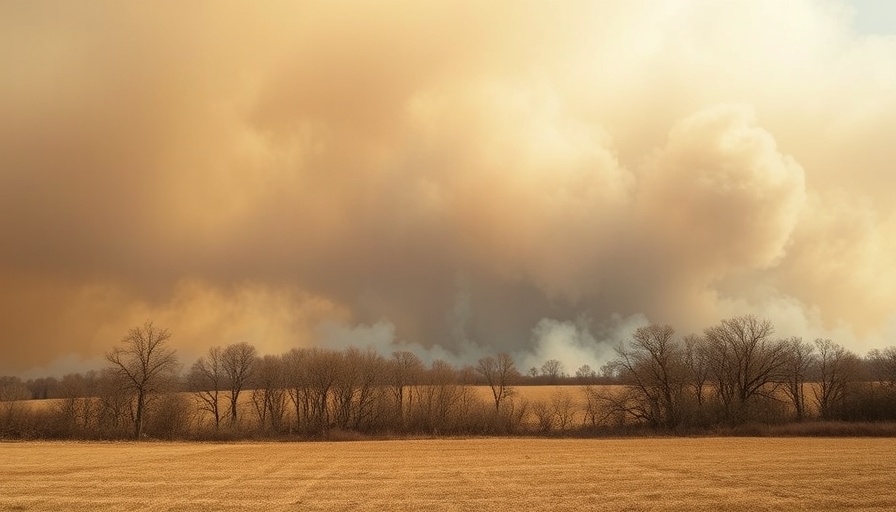
Understanding the San Jacinto Wildfire Reaction
The San Jacinto County wildfire has rapidly escalated, covering approximately 1,300 acres and currently standing at only 10% containment. The situation has raised concerns for local residents, officials, and environmental advocates alike, leading to urgent discussions about strategies to mitigate wildfire risks in Texas.
What Sparked This Wildfire?
Although the specific cause of the San Jacinto wildfire is still under investigation, climate conditions in Texas have contributed significantly to the risk of uncontrolled fires. The combination of prolonged drought, rising temperatures, and high winds can create perfect conditions for wildfires, causing them to spread quickly, much like earlier incidents in the state that yielded similar challenges, such as the devastating wildfires in 2011.
The Impact on the Community
For residents in areas close to the fire, the emotional toll is profound. Evacuations have been ordered, and many families are grappling with uncertainty about the status of their homes. This resonates on a broader scale as similar situations have fostered discussions about the importance of disaster preparedness and community resilience in facing natural calamities.
Lessons Learned from Past Fires
Historical precedents have shown that effective communication during crisis situations is crucial. For instance, during the Bastrop wildfires, timely alerts and organized emergency responses greatly aided in minimizing chaos. Learning from past mistakes can help firefighters navigate current challenges more effectively.
Future Predictions: Are We Prepared Enough?
As climate change continues to influence weather patterns, forecasts suggest that Texas may face more frequent and intense wildfires. This emphasizes the need for policymakers, possibly following the lead of California, to develop more robust fire management strategies suited to Texas' environmental conditions. These may include controlled burns and enhanced funding for firefighting resources.
Understanding Community Response Strategies
Community involvement is pivotal in wildfire management. Residents can engage in local fire prevention programs, advocating for better land management and implementing proper clearing around properties. However, this also requires the local government's support through funding and resources.
How to Stay Informed During Natural Disasters
Staying updated on emergency protocols ensures individuals are ready to act quickly when needed. Awareness of local evacuation routes, monitoring county alerts, and participation in community briefings are key ways citizens can prepare for potentially hazardous situations.
The Role of Technology in Managing Wildfire
Modern technology plays an essential role in managing fire incidents. Drones, satellite imagery, and advanced meteorological tools can aid response teams in understanding wildfire behavior and predicting spreads, thus enhancing firefighting strategies as seen in other states battling similar issues.
Conclusion: Building a Resilient Future
The wildfire situation in San Jacinto County reinforces the pressing issue of wildfire management in Texas. Communities must come together to learn from these incidents and advocate for effective wildfire prevention and emergency response strategies. This ongoing battle requires not only local preparedness but also substantial attention from state and federal agencies to build resilience against future threats.
As we develop a clearer understanding of wildfires' impacts, it is essential to push for policies aimed at combatting climate change and protecting vulnerable areas. By supporting local initiatives and emphasizing proactive approaches, residents can play a vital role in safeguarding their community's future.
 Add Element
Add Element  Add Row
Add Row 



Write A Comment